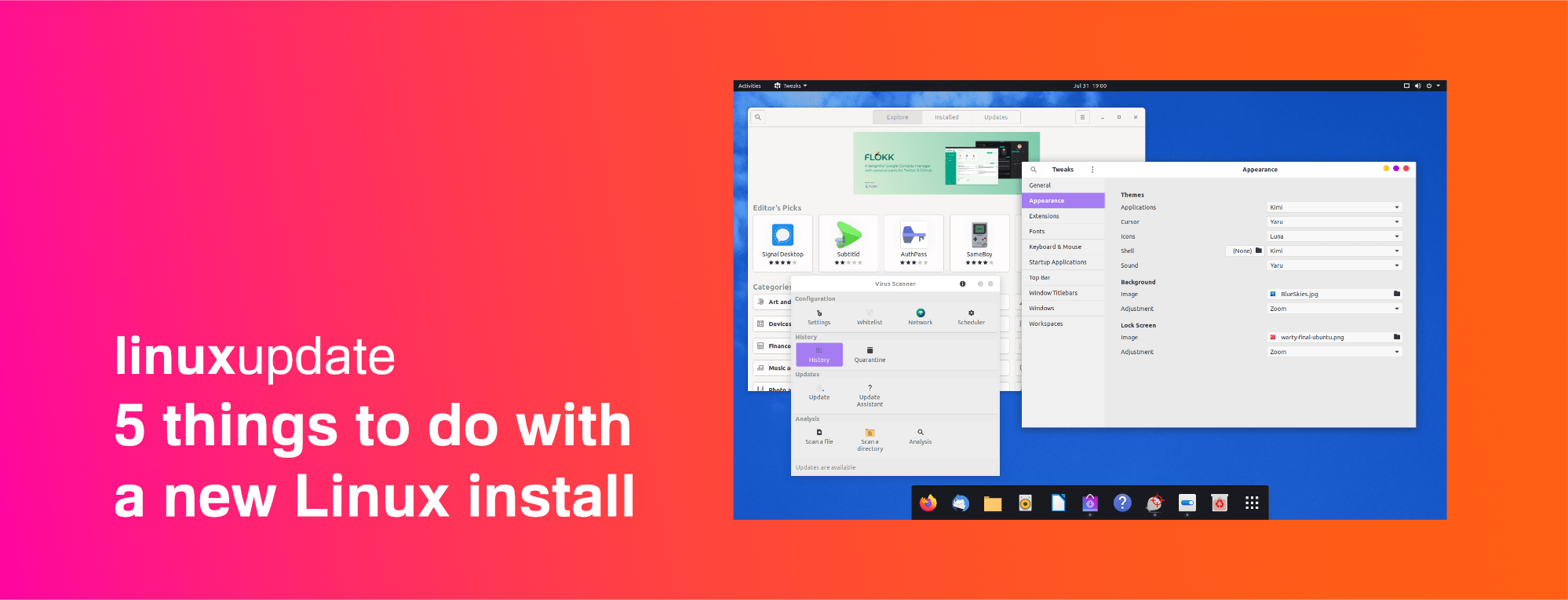
One of the best things about Linux is how basically anything is possible. Out of the box most Linux distros get a lot right, but there are some great tweaks you do to make the experience even better. This is aimed at GNOME users (e.g; Fedora, Ubuntu, Debian, and CentOS all use GNOME out of the box).
Themes! (and icons)
GNOME is looking a little bit tired these days, it’s got a clean design for sure but it’s not changed in a few years. The default GNOME icon pack is looking quite old these days too. Every major desktop environment has the ability to change themes and icons, for GNOME here’s some great options:
Get a dog Dock
GNOME comes with a side-mounted bar, but the GNOME extension Dash to Dock gives you a traditional dock that can live on any edge and has a tonne of options. Dash to dock is available from the GNOME Extensions website here: https://extensions.gnome.org/extension/307/dash-to-dock/. Check out the guides at the bottom of this post for steps on installing GNOME Extensions + GNOME Tweaks if you’re unsure.
Backups and anti-virus
When you get a new computer or install a new OS, the basics like backups and anti-virus are things most of us forget about for a while. You may also think that Linux doesn’t need anti-virus, but ClamAV is super light weight and it’s free so use it (or a competitor, of course).
Ubuntu comes with the Déjà Dup Backup Tool pre-installed, just search for Backups and configure it to your liking.
If you want a FOSS anti-virus, follow the ClamAV guide below:
Enable aptX and LDAC
If you have a modern pair of Bluetooth headphones, chances are it supports aptX. I personally prefer the sound of the AAC Bluetooth codec, but aptX-LL (Low Latency) is a must-have if your headphones support it for watching videos and minimising A/V sync issues. If your headphones support aptX-HD or Sony’s LDAC, you’ll also want to install this. Out of the box, most Linux distros forgo aptX support because it’s a proprietary codec but it’s fairly simple to install and enable with the PulseAudio plugin.
As with most things, guides can change over time so if in the future you bump into any problems with the commands below check out the Github page and build from scratch.
sudo add-apt-repository ppa:eh5/pulseaudio-a2dp sudo apt update sudo apt install libavcodec-dev libldac pulseaudio-module-bluetooth
Get some Applications
Most Linux distros come with LibreOffice + Firefox out of the box and that’s about it. Here are some things you might want to install.
- Google Chrome (download from https://www.google.com/chrome/ and run the .deb installer)
- VLC – a fantastic video player (get it from your distro’s software installer)
- FreeOffice – a great free-of-charge (but not FOSS) office suite with full Microsoft Office file compatibility (https://www.freeoffice.com/en/). It has a ribbon UI that looks similar to Microsoft Office too.
- Steam (https://store.steampowered.com/about/)
Make sure you follow these guides first if you want to change your theme/add extensions and manage them with GNOME Tweaks:
and:
Ubuntu How To: Install GNOME Extensions (Firefox and Chromium)